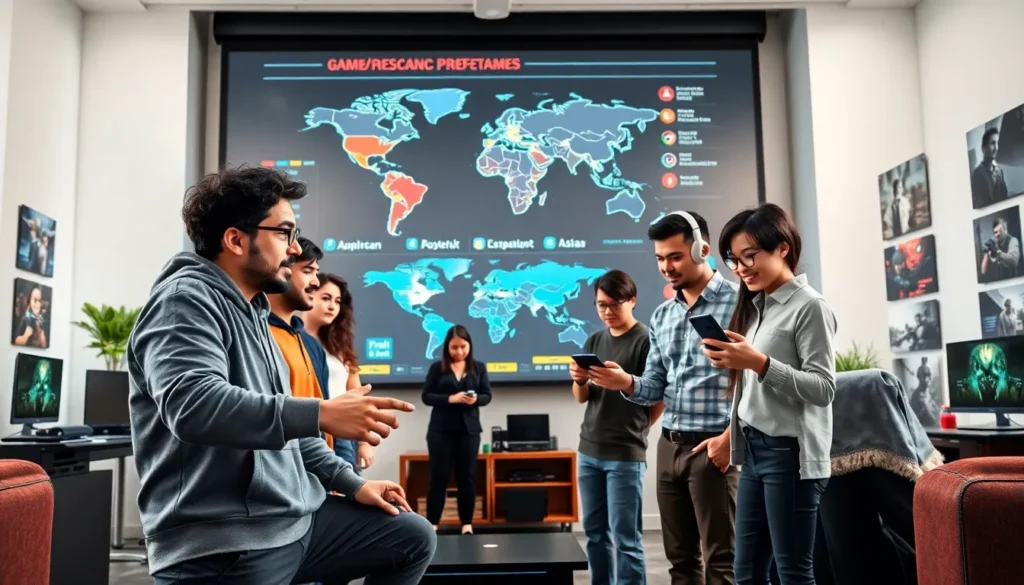Table of Contents
ToggleWhen it comes to gaming, one size definitely does NOT fit all. Picture it: a teenager in Tokyo enthralled by the latest mobile sensation, while his buddy in Los Angeles is furiously clicking away at a first-person shooter. What’s the deal? This is the exciting world of regional preferences in WebBizMagnet games. In this text, we’ll jump into how cultural vibes, gaming genres, and localization efforts differ across the globe. Ready to level up your understanding? Let’s go.
Understanding Regional Preferences

Cultural Influences on Game Selection
Gaming isn’t just about hitting buttons: it’s a cultural experience. Different regions bring unique perspectives that shape their gaming choices. For example, in Japan, anime and manga heavily influence game designs, leading to vibrant stories and visually captivating graphics. In contrast, North American games often lean towards competitive gameplay, reflecting a sports culture that values teamwork and winning.
Cross-cultural influences are fairly evident. Western countries might prefer open-world games that allow freedom and exploration, while in parts of Europe, social interaction and community landscapes take center stage. As developers strive to captivate diverse audiences, understanding these preferences becomes paramount.
Popular Genres Based on Regions
Case Studies of Regional Game Trends
Analyzing regional preferences offers fascinating insights. For instance, mobile games have soared in popularity in East Asia, often leading the charts with engaging, quick-play formats perfect for bustling lifestyles. A good case in point is the success of titles like Honor of Kings, which illustrates the powerful grip mobile gaming has in China.
East Asia: Mobile Gaming Dominance
The mobile gaming craze in East Asia shows no signs of slowing. Fast-paced, accessible gameplay suits urban environments where time is short, giving rise to innovative titles that seamlessly blend fun and social elements. Developers recognize this trend, targeting mobile-first strategies that cater specifically to this demographic’s unique tastes.
North America: Multiplayer and Esports
Meanwhile, North America boasts a thriving community around multiplayer games and esports. Titles like League of Legends and Fortnite dominate gaming conversations, emphasizing competitive play and teamwork. Here, the community aspect, including streaming and live competitions, feeds into the local gaming culture. It’s a clear reflection of a society that values direct engagement and collaboration.
Europe: Casual and Indie Games
Localizing Games for Different Regions
Europe showcases a unique tapestry of gaming preferences, with a significant push toward casual and indie games. Titles like Stardew Valley and Among Us illustrate this trend, where relaxation meets social interaction. The rise of indie games highlights gamers’ appetite for creativity and originality, distinct from mainstream offerings. Also, localization plays a critical role. Developers adapt language, humor, and themes to ensure cultural resonance. This process is crucial, gaming needs to feel relatable to cater effectively to European audiences.
Challenges in Game Localization
Technological Considerations
Even though the benefits, localization comes with its hurdles. Developers face not only language barriers but also technological challenges. For instance, integrating local payment methods and ensuring platform compatibility can complicate the process. Besides, cultural nuances, like humor and references, need careful handling to avoid misunderstandings. As the gaming world becomes increasingly interconnected, these challenges become more pronounced, demanding innovative solutions from developers.
Marketing Strategies for Regional Success
To thrive internationally, companies must adapt their marketing strategies. Tailoring campaigns to align with regional preferences enhances engagement and reach. For example, leveraging local influencers can significantly impact brand visibility in diverse markets. Also, utilizing popular social media platforms relevant to specific regions can optimize outreach. Engaging content that resonates with local culture fosters community and builds loyalty, ensuring that games aren’t just played but embraced.





